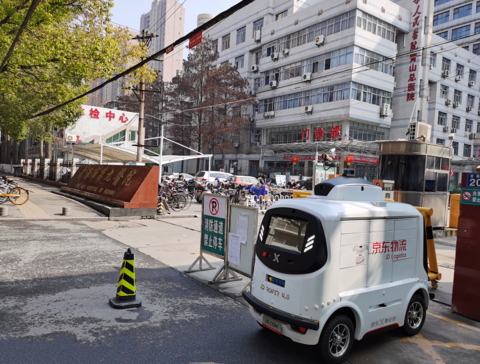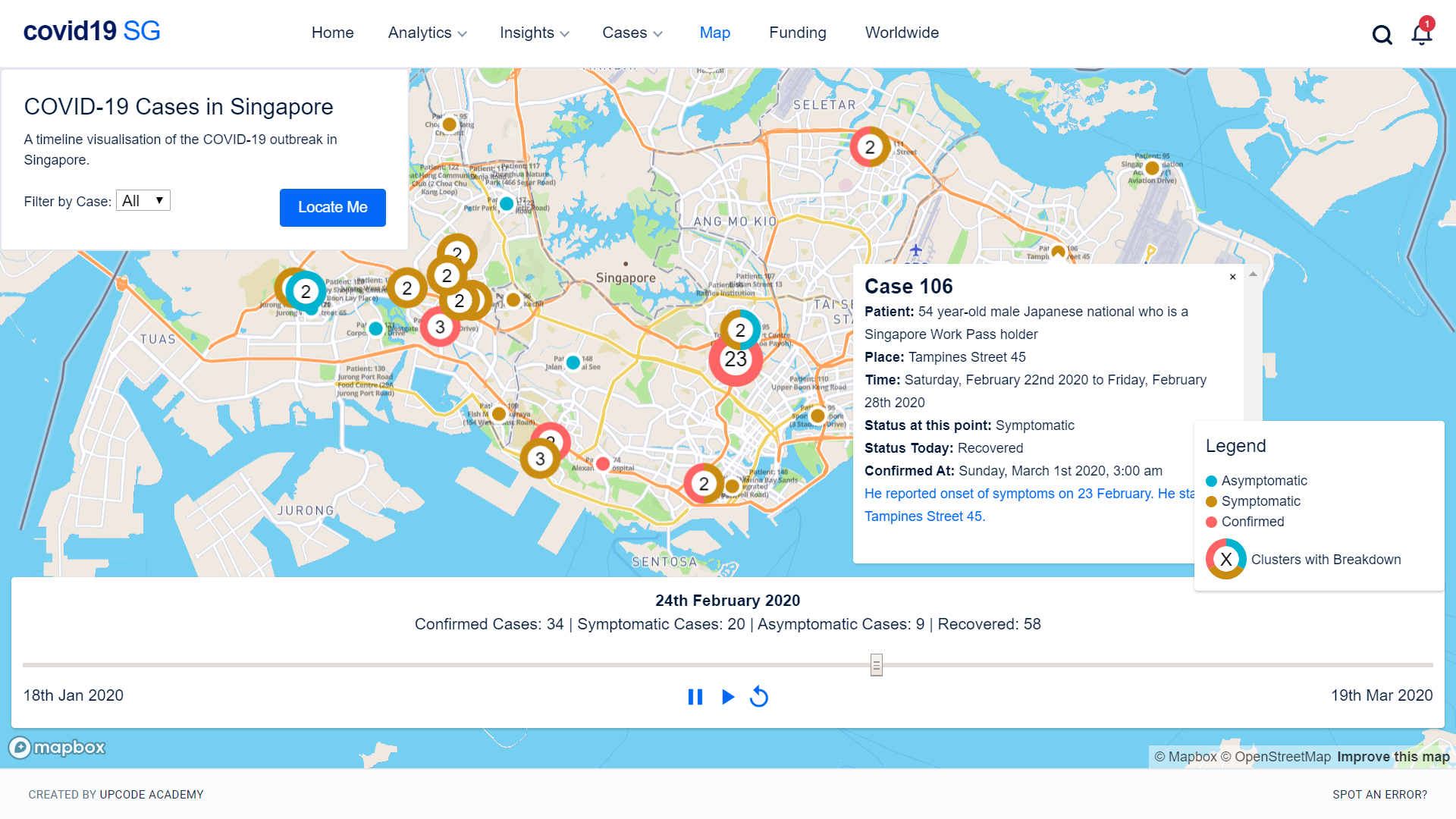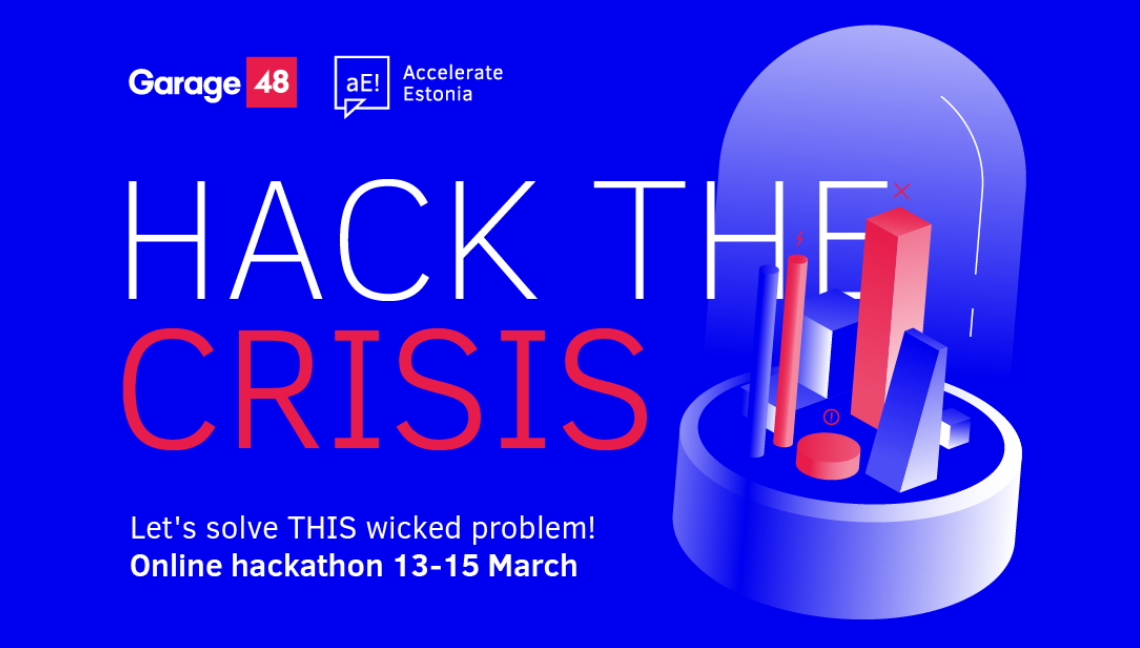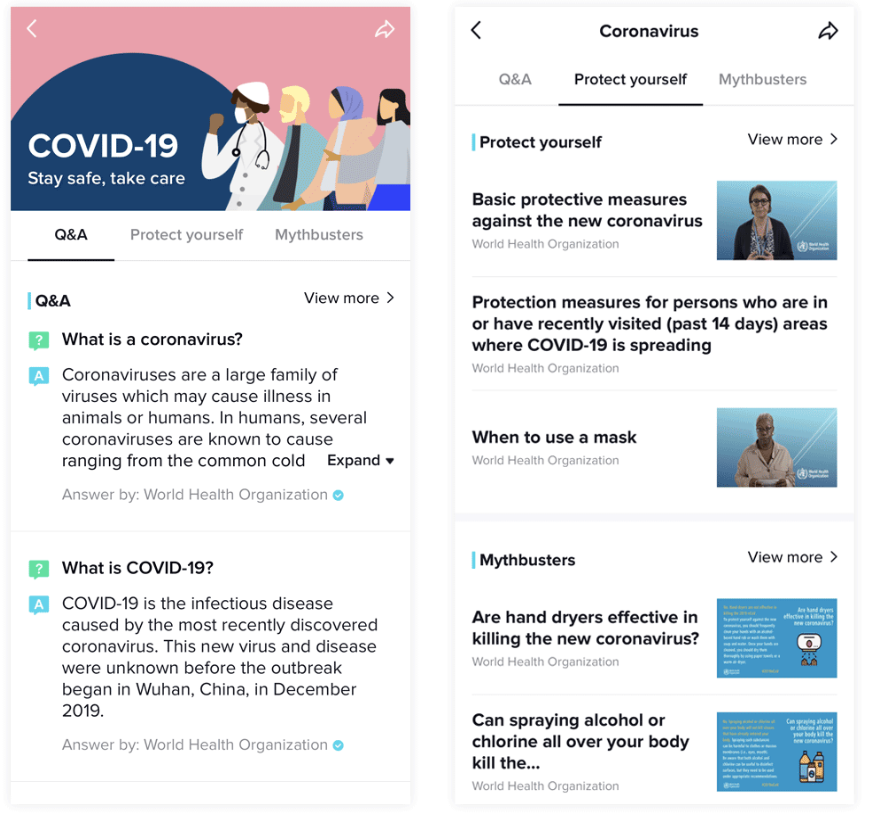Innovation in the Time of Coronavirus

“Everyone is afraid of making a mistake. Everyone is afraid of the consequence of error, but the greatest error is not to move. The greatest error is to be paralysed by the fear of failure.”
– Dr Michael Ryan, WHO Executive Director, WHO Press Conference (13/03/2019)
The stakes for innovation have never been higher, the risk of failing has never felt greater. Whenever an organisation innovates they are always taking a step into the unknown, with results only confirming the validity of their approach after the fact. This is one of the reasons why innovation is difficult in the public sector, a naturally risk averse place. However, the outbreak of the coronavirus means that governments have to do new things, innovate in the face of a wider ranging set of problems, and with greater stakes at the core of every decision they make.
One of the reasons why the demand, difficulty and necessity of innovation is so high is the systemic nature of the coronavirus threat. It threatens the fabric of society and economy, transcending issue areas or typical government silos because all decisions that people make in their day-to-day lives affect the outbreak. Therefore, barring the development of a vaccine, singular disconnected responses will be ineffective in stopping the pandemic as a whole, even if successful in their own specific mission. In the words of complex systems analysts Norman, Bar-Yam and Taleb (2020), “Standard individual-scale policy approaches such as isolation, contact tracing are rapidly (computationally) overwhelmed in the face of mass infection, and thus cannot be relied upon to stop a pandemic. Multi-scale population approaches… are essential”. Therefore, the coronavirus outbreak has completely reframed the purpose and workings of governments, giving completely new shapes to the types of innovations that we are already starting to see across government.
Coronavirus challenges to traditional government
Governments are faced with a particular suite of problems that shape the context of their work. First of all, they must work to an extremely short time-table, mostly not under their control. Following decades of growing complexity and bureaucracy defining government work, the rhythms of government are not typically well suited to adjust to this speed of working. Typical policymaking involves basing action on a wealth of evidence and experience; this time, action must precede the depth and breadth of evidence that policymakers typically demand for making drastic decisions.
Perhaps most key for the context is that decisions have to be made in a context of considerable uncertainty. Testing kits for the virus are limited, and as a result, many countries must make policy decisions without complete information on the state of the virus. Governments must make plans not knowing when a vaccine might be developed, with estimates ranging from 6-18 months. It is not clear either if people may even be able to contract the virus a second time, which would undermine any ‘herd immunity’ policy. The speed at which the virus is being transmitted is so fast that decisions must be made daily, some of which may seemingly contradict a previous decision, even if it is based on new evidence. On an operational level, there are few feedback loops for governments to pilot, test and evaluate which approach might work well or not – instead, they must make decisions that will only be proven right or wrong in hindsight, but on which thousands of lives rest. Governments will never know the counter-factuals – what if they did too much, not enough, or the wrong thing? – but must act nonetheless. This dynamic is extremely demanding, but we are already seeing governments start to make interesting decisions around the world, which this blog can hopefully illuminate.
New Technologies
Recent technological advances have enabled governments to respond to this health crisis in ways they would have never been able to before.
China have been very proactive at automating services in order to reduce human-to-human contact and thereby inhibiting the transmission rate. The national government deployed machines that automatically detect the temperatures of people within 2-3m of them in high-density urban areas like transport hubs including train stations, thus liberating health professionals from this (risky) task. Medical supplies have been transported within and between hospitals by self-driving or remote vehicular drones. Meanwhile, supermarkets have been quickly created from scratch that take automation to a new level, where all tasks, including the restocking of shelves, is undertaken by robots.

Country governments have quickly started using digital platforms to reach out to citizens as a way of adapting to the crisis, at speeds atypical of the public sector. For example, the Government of Brazil has created an app to help offer health information to citizens, and Sweden has quickly developed a new education platform that will offer resources for children who can no longer attend school. It is the speed at which governments are uptaking digital platforms, creating new content fit for the medium, that are particularly notable.

However, perhaps the most pressing uses of technology come in the realm of data analysis, and is why the WHO have reiterated that governments must ‘test, test, test’. Big and publicly accessible data is a vital part in the fight against epidemics as it enables governments to make more informed decisions. In this light, the OECD’s Digital Government and Data team have launched their own Call for Evidence for uses of open government data to address the COVID-19 Outbreak, demonstrating the importance of these ongoing efforts to collect and use data.
In Singapore, a single researcher, unattached to the Government, has implemented an impressive use of open data. Zhi Peng Lee, founder of a coding school, has built the co.vid19.sg website using the impressively detailed data made publicly available by the Singaporean Government. Lee’s website, updated every day, provides a detailed snapshot of every confirmed case of corona virus. The exact location of each person is shown on a map (whether a private residence or hospital) and demographic information (nationality, age, gender) are also provided. This allows both citizens and governments to make better-informed decisions. Perhaps the ‘openness’ of this data can be questioned – privacy issues may prevent other governments from publishing such detailed data about their citizens for the public to see. Nonetheless, Singapore’s deep pool of data on the outbreak has enabled them to make public health decisions based on extremely detailed information, which may well be a reason for their (currently) strong health outcomes.

Broadly speaking, technological solutions are being well monitored across the world given the large interest in the use of emerging technologies, and these solutions are being well covered by dedicated sources. For example, this Corona Virus Tech Handbook website is compiled by researchers from Newspeak House, and offers a range of technological innovations being undertaken globally. It is publicly accessible (although run through Google Documents, so users may struggle to access it with high-traffic). The more that technologies and technological solutions are shared in the spirit of open data, the more resources that governments will have to deal with crises. However, the coronavirus problem has demanded solutions that go beyond the scope of applying new technologies to adapt to already-known problems.
New Insights, New Solutions
Perhaps recognising the limits to their own imagination and capacity, some governments are finding solutions from outside of government, or from unexpected places within it. On 13 March, the European Union launched a call for startups and Small and Medium Enterprises (SMEs) to submit any innovative solutions that they might have for handling coronavirus. This is through a EUR164 million EU fund which was designated as “Bottom Up”, meaning it has “no predefined thematic priorities”, thus allowing for coronavirus-relevant innovations to be submitted and fast-tracked. Similarly, France have launched a call for innovations that can be quickly and easily scaled up and reproduced nationally, through their Agency for Innovation and Defence, with a budget of EUR10 million. In Estonia, the government policy development lab Accelerate Estonia partnered with Garage48 to run a 6 hour ‘hackathon’ which collected 96 ideas with over 860 people in the official Slack (Slack is a proprietary instant messaging platform). They now have 28 teams working together on projects as a result. Similarly, Lithuania will be running their own ‘hackathon’, as will Finland, Latvia and undoubtedly, other countries will follow suit.

Singapore has employed ‘contact trackers’ in their public health service: people who are paid to work out exactly who newly quarantined patients have been in contact with, so that the government has as much detailed data to make the best informed and targeted interventions. They research cases through interviews with the patient and examining of (digital) calendars and receipts, to piece together a picture of exactly who each patient has interacted with, where, and when, before reporting back to the Singaporean Ministry of Health.
In the UK, members of the Communication Workers Union (CWU) who are part of the Royal Mail postal service, voted to put themselves forward as an “additional emergency service”, in which mail workers would be able to deliver medical aid, check on vulnerable and support people working from home. Referring to a “language of priorities”, workers (rather than senior officials) themselves came up with the suggestion to help rather than run a planned strike, realising that they had a certain set of skills that might be useful when re-purposed in this new context. In a similar spirit, Sophiahemmet University College are offering a short medical training to staff of the Swedish SAS airline who are currently out of work, recognising that these are staff that are used to working in high-pressure situations and therefore may have translatable skills.
Therefore, whilst government can mobilise its own resources under traditional authorities and capacities, a shared sense of social purpose and solidarity is driving social solidarity-focused innovations, many of which are bypassing government. Canadians have kicked off the ‘caremongering’ trend, creating a platform that allows people to post #ISO posts (‘in search of’ help requests), or #offer posts, enabling people to acquire important medical or household goods that they may not have been able to find for health or mobility reasons. Similarly, the website https://covid-solidarity.org/, operational in three languages, allows people to offer or request help by doing grocery shopping for their basic needs, and citizens are encouraged to submit their initiatives too to www.endcoronavirus.org so that these sort of initiatives can be shared worldwide.

With citizens seemingly so proactive in creating their own social innovations, governments must ensure citizens have the right information to do the right activities through effective communications. The World Health Organization (WHO) have tried a number of new communication methods to reach out to people on platforms that traditionally are a source of misinformation. They created their first ‘TikTok’ account, have run Reddit ‘Ask-Me-Anythings’ with some of their scientists, and worked with big online platforms like YouTube and Instagram to provide front page links to WHO advice on each. WhatsApp, perhaps the most difficult platform for governments to combat misinformation, have partnered with governments and international organisations to help promote information on the crisis from validated and trusted news sources.
A Systemic Focus
A global pandemic of this size and severity however demands solutions beyond individual technological ones – it demands governments to work at both country level and the most local of geographic scales to co-ordinate actions and resources across internal silos, incorporating expert insights from across the whole of society, all to ensure the population behaves in the requisite ways in all areas of their life. It demands thinking in terms of systems – how will interventions in one area of the society or economy affect behaviours and outcomes in another?
For example, the WHO’s Tedros Adhanom Ghebrevesus praised Singapore as a successful example of an “‘all of government’ approach”. In this blog, I highlighted two innovations from that state, but they could not be more different in their focus: one a brilliant use of open data, and the other, a new type of job imagined for this new emergent purpose. The key is that Singapore have taken a systemic approach to the problem. Individual innovations form part of a large, considered approach to the problem, one that incorporates a focus on human needs and decision making with scientific insights and technological advances, mobilising resources with these new insights and authorities across the whole of government.
Therefore, the management of a pandemic implicitly draws attention to the decisions that people make as individuals and as groups. On the most local, project level, this means innovations like France delivering contraceptive pills, recognising their unique needs as people and creating a solution that limits the possibility for transmission. However, the focus on human behaviour has also been born out at higher, country-level decision and policy making in some governments. The epidemiology discipline has successfully mapped people’s behaviour with big data to predict and show how viruses spread within populations, so social isolation policies will naturally incorporate this focus to a degree. However, the United Kingdom government appeared to place even more faith in ‘Behavioural Insights’ in their decisions about when to enforce social isolation policies. These included insights around stopping people touching their face, but also, according to some reports, even decisions about the timings of social isolation. It was reported that the UK was delaying mass social isolation on the advice of its ‘Behavioural Insights Team’ because it would induce future “behavioural fatigue” in the population, resulting in net greater transmissions and deaths.
The UK’s approach here highlights the two key issues surrounding the current ecosystem of innovations. The first is that we do not, and cannot know until after the fact, if any decision in this uncertain environment is the right one, or whether an innovative approach may have been correct but insufficient. Secondly, decisions are requiring co-ordination between internal (and external) policy makers and experts that might have previously been inhibited by organisational blocks and silos. The solutions to these systemic problems will demand policy makers work together in new ways that they may have previously been uncomfortable with. Confounding both of these issues is the uncertainty around not only the coronavirus itself (mutations, etc.) but also the societal-level effects of human behavioural factors (fear, etc.) that may affect predictive models as well as government responses. These same issues have always faced policymakers, but the stakes have been raised now to potentially civilisation-defining levels. There is hope, however, for policymakers to continue share ideas and practices that seem to be working in real time, and, led by these insights in combination with their skills and experiences, generate solutions to help protect and save their citizens’ lives.
A dynamic situation requires a dynamic response
The current situations is one that is fast-moving and unpredictable. Governments and partners are learning new things at an incredible rate. We, along with our colleagues in the rest of the OECD, are seeking to assist governments in dealing with this crisis. We do not wish to duplicate the knowledge hubs that are out there, some of which we have mentioned, but we do want to ensure that we help capture some of the lessons – those that might be relevant to jurisdictions right now, but also that will help us understand the innovation process better later. With this, we hope to better understand how innovation can be supported before, during and after a global crisis situation.
To promote global collaboration on finding innovative solutions to the crisis, the OPSI is issuing a call out to all levels of government, civil society, international organisations and the private sector to gather innovative solutions and inspiration on how individuals and organisations across the globe are responding to the crisis. We invite you to submit your ideas using this google form, all responses will be immediately available for public view, download, and comment.











